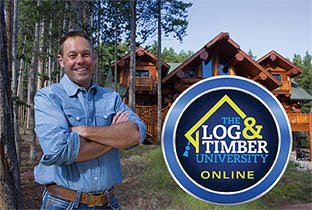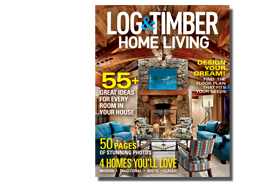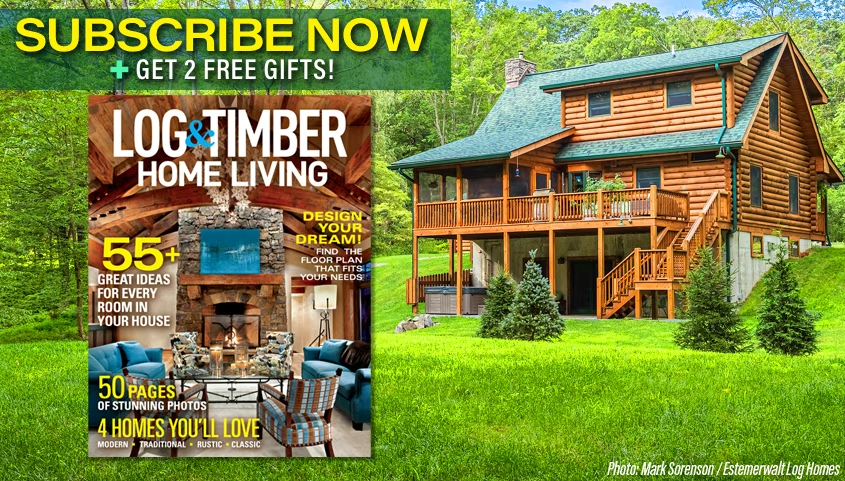
To ask a timber home owner what’s so special about living in a timber frame is like asking a hiker what’s so special about the view from a mountaintop. “Everything!” they’ll want to yell. From the feeling of accomplishment to the serene silence of the landscape, it’s each little part that makes the whole so meaningful.
It’s the same way with timber frames. From custom-home design to energy efficiency to close proximity to nature, loving a timber home is akin to appreciating each tree that makes up a forest.
Timber frame construction has been around for centuries. A symbol of history and strength, timber framing techniques date back to Neolithic times, and since then have been used in many areas of the world, including Japan, Denmark, England, France, Germany, Scotland and the United States.
It also has been used to construct buildings and homes during different time periods throughout history. For example, while ancient civilizations like Egypt and Rome used mostly stone to build, they also used timber framing methods for many of their roof systems. Today, you can still visit 12th- and 13th-century European churches to see some of the world’s oldest examples of fully timber framed buildings. And in America, English settlers in Virginia used the land’s vast forests to raise a variety of timber structures within the walls of Jamestown during the early 1600s.
Fast-forward nearly 400 years to the 1970s: Timber framing enjoyed a rebirth that continues to this day. It stands to reason — timber homes offer the best of both worlds. Outside, they usually resemble more conventional housing. Inside, however, they expose artfully crafted timber posts and beams and intricate joinery, traditionally secured by wooden pegs, to create dramatic interior spaces. A timber frame provides not only an exquisite structure for the home, but also supports the weight of the roof by transferring the load to the frame’s principal posts and the home’s foundation.
See Also: What is a Natural Timber Home?

Energy Efficiency
Despite their link to tradition, today’s timber homes have taken the lead in energy efficiency. “When I meet with new clients, I typically describe a timber frame as the visible skeleton of a building. I ask them to visualize a 12-foot-long wall; with conventional construction that wall has ten 2-by-6 studs, each acting as a small post. The insulation is then incorporated between each of the structural members, allowing for thermal bridging at each stud and lowering the cumulative R-value of the wall,” explains Jeremy Bonin, principal architect and owner of Bonin Architects. “In a timber home, large SIPs (structural insulated panels) are applied to the exterior of the frame, almost eliminating thermal bridging and providing a more airtight structure.”
Because timber structures are wrapped within super-insulated walls and roof panels, residents enjoy the interior beauty of the framework while having one of the industry’s highest-rated wall systems in terms of energy efficiency. In fact, with their tight building envelopes, timber homes can realize energy savings in excess of 35 percent, as compared to standard stick-built construction using fiberglass insulation.

Design Benefits
Timber homes boast a number of inherent benefits, but it’s the beauty of the timber trusses and the endless amount of awe-inspiring design options that turn home buyers who are curious about the style into full-blown timber home devotees.
Adaptability.
When most people envision a timber home, they think of large expanses of wood and sprawling, barn-style ceilings. But, timber homes can be built to suit any look or lifestyle. From modern to rustic, cozy to elegant, the options truly are endless.
Size Options.
Timber framing gives you the opportunity to have as expansive or as intimate of an interior space as you please. In the case of more scaled-down designs, the beauty of the frame will draw eyes upward, making a humble home feel more spacious. On the other hand, in large plans, the frame brings the volume down to a more human scale due to the warmth of the wood and the joinery.

Open Layouts.
One of today’s most popular design attributes — an open floor plan — goes hand-in-hand with the timber frame style. Because of the way the frame is constructed, the outer shell rests comfortably on the home’s posts and beams, lending itself to an open-concept design that’s visually impressive. Plus, less-structured layouts mean you can modify your home’s interior living spaces as your lifestyle and needs change.
Whether your goal is to own your forever home or a home-away-from-home, timber framing’s adaptability makes nearly any vision possible. Understandably, many options result in many questions. Our goal is to answer your biggest and most pressing inquiries about timber framing and send you down a path that will lead to your new timber home.
See Also: How to Design a Timber Frame Exterior











